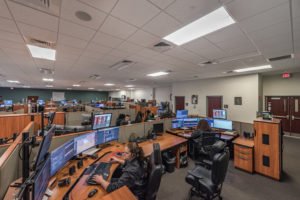 The global use of social media and the adoption of smart phone technology is having a tremendous impact on both 911 and 311 services. Texting of incident data is increasingly common, and the ability of on-the-ground information transfer of photo and video data has emerged. The direct result on 911 and 311 is a greatly increased call volume and the need for new technology to assist data collection and analysis of the call. Some municipalities have developed teams of public safety officers (PSOs) that can respond to non-emergency situations that do not require a sworn officer to collect data, file reports, and assist event resolution. Two powerful trends – 311 / 911 consolidation and enhanced event report data via smart phones – make cost-effective, rapid response capabilities possible.
The global use of social media and the adoption of smart phone technology is having a tremendous impact on both 911 and 311 services. Texting of incident data is increasingly common, and the ability of on-the-ground information transfer of photo and video data has emerged. The direct result on 911 and 311 is a greatly increased call volume and the need for new technology to assist data collection and analysis of the call. Some municipalities have developed teams of public safety officers (PSOs) that can respond to non-emergency situations that do not require a sworn officer to collect data, file reports, and assist event resolution. Two powerful trends – 311 / 911 consolidation and enhanced event report data via smart phones – make cost-effective, rapid response capabilities possible.
The advanced traffic management system is a top-down management perspective that integrates technology, primarily to improve the flow of vehicle traffic and improve safety. Real-time traffic data from cameras, speed sensors, etc. flows into a traffic management center (TMC) where it is integrated and processed (e.g. for incident detection) and may result in actions taken (e.g. traffic routing, DMC messages) with the goal of improving traffic flow. Because of reliance on sophisticated data management systems and video display technology, there is a national trend to co-locate the TMC in a consolidated communications center. In some cases, the ECD will monitor the TMC video displays within the communications / dispatch floor area. As with a 311-call center, technology can be co-located, however, the TMC and 311 personnel should not be located within the communications / dispatch floor area.
Clearly, rapid development of technology, societal change, and an increase of information requires enhanced training capabilities for 311 and 911 communications personnel. The cost in personnel time and training facility accommodations has created a trend of on-site, in-service training venues. The evolution of internet-based training protocols and emerging audio-visual technologies make it practical to create multi-purpose training spaces within modern ECD facilities. A critical concern is that training classrooms need to be flexible multi-purpose venues. Key components of flexible training facilities are lighting controls to accommodate a variety of space functions; access to audio-visual capabilities; adequate storage space for space reconfiguration and furniture support.